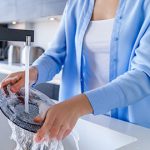
Water damage can strike unexpectedly, wreaking havoc on your home and belongings. Whether caused by burst pipes, flooding, or leaks, the aftermath of water damage can be overwhelming. In this comprehensive guide, we’ll explore everything you need to know about water damage restoration, from understanding the causes and effects of water damage to effective restoration techniques and tips for preventing future damage.
Understanding Water Damage: Water damage can manifest in various forms, ranging from minor leaks to catastrophic flooding. Understanding the different types and categories of water damage is essential for assessing the severity of the situation and determining the appropriate course of action.
Types of Water Damage:
Clean Water Damage: Caused by clean water sources such as burst pipes, rainwater, or condensation. While initially harmless, clean water can become contaminated if left untreated.
Greywater Damage: Contains significant levels of contaminants and may cause discomfort or illness if ingested. Greywater can result from appliance leaks, toilet overflows, or sump pump failures.
Blackwater Damage: Highly contaminated water containing sewage, chemicals, or pathogens. Blackwater poses serious health risks and requires immediate professional intervention.
Categories of Water Damage:
Category 1: Involves clean water sources and poses minimal health risks. Examples include broken water supply lines or overflowing sinks.
Category 2: Contains significant levels of contaminants and may cause illness or discomfort upon contact. Examples include dishwasher or washing machine leaks.
Category 3: Represents the highest level of contamination and poses severe health risks. Examples include sewage backups, flooding from rivers or streams, or storm surges.
Effective Water Damage Restoration Techniques: Restoring your home after water damage requires a systematic approach and specialized equipment. Here are some effective restoration techniques used by professionals:
Water Extraction: Removing standing water is the first step in the restoration process. High-powered pumps and extraction equipment are used to extract water from affected areas.
Structural Drying: Once standing water is removed, the drying process begins. Industrial-grade dehumidifiers and air movers are used to dry out structural materials such as drywall, flooring, and wood framing.
Cleaning and Sanitization: Affected surfaces and belongings are thoroughly cleaned and sanitized to remove contaminants and prevent mold growth. Specialized cleaning agents and antimicrobial treatments are used to restore cleanliness and safety.
Moisture Monitoring: Throughout the restoration process, moisture levels are monitored using moisture meters and thermal imaging cameras to ensure thorough drying and prevent secondary damage.
Reconstruction: In cases of severe damage, reconstruction may be necessary to repair or replace damaged structural materials and restore the integrity of the home.
Preventing Future Water Damage: While water damage may be unavoidable in some cases, there are steps you can take to minimize the risk and impact of water damage in your home:
Regular Maintenance: Perform routine inspections and maintenance on plumbing systems, appliances, and roofing to identify and address potential issues before they escalate.
Proper Drainage: Ensure proper drainage around your home’s foundation and landscaping to prevent water from pooling and seeping into the basement or crawl space.
Leak Detection Systems: Install leak detection devices and smart water shut-off valves to alert you to potential leaks and minimize water damage.
Adequate Insulation: Properly insulate pipes, especially those located in unheated areas such as attics, basements, and crawl spaces, to prevent freezing and burst pipes during cold weather.
Emergency Preparedness: Develop an emergency plan that outlines steps to take in the event of water damage, including contacting professional restoration services and safely evacuating your home if necessary.
Conclusion: Water damage can be devastating, but with prompt action and effective restoration techniques, you can minimize damage, restore your home, and regain peace of mind. By understanding the causes and effects of water damage, implementing preventive measures, and knowing what to do in the event of an emergency, you can protect your home and family from the devastating effects of water damage. Remember, when it comes to water damage restoration, time is of the essence. Don’t hesitate to seek professional help to ensure a swift and successful restoration process.






